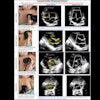The best way to win a malpractice lawsuit is to avoid a case in the first place. To accomplish this goal, it's critical to pay attention to communication, documentation, and the all-important doctor-patient relationship, according to Heather Hansen of law firm O'Brien & Ryan in Plymouth Meeting, PA.
"What it comes down to is the medicine is not the focus of these cases," she said. "The trial becomes a theater, and whoever puts on the best show [wins], and you need to focus on avoiding getting there in the first place."
Hansen discussed medicolegal issues in ultrasound during a talk at the recent Leading Edge in Diagnostic Ultrasound conference in Atlantic City, NJ.
In general, the top 10 reasons physicians are sued for malpractice are weak medical records, inadequate history-taking, inattentive follow-up, informed consent was not obtained, informed refusal was not obtained, overlooked lab studies, communication problems, medication problems, weak patient education, and inattention to the importance of a sound doctor-patient relationship (Medical Risk Management Advisor, 2002).
The last one is the most important, Hansen said. As discussed in Malcolm Gladwell's book Blink, the more often a doctor touched a patient, the more often the doctor made a patient laugh, and the more often the doctor asked a patient questions, the less likely the patient was to sue, Hansen said.
"Lawsuits are often not a function of actual malpractice, but more a function of the relationship between the doctor and the patient, and the documentation of the specifics of the relationship," she said. "The medicine is certainly important for you to fulfill your ethical duty to the patient, but with regard to avoiding lawsuits, the communication is foremost."
The physician-patient relationship starts the minute the patient walks in the door, Hansen said. Every aspect of this experience should be as positive as possible for both people to avoid some of these lawsuits.
The patient and doctor are meant to be a team. For example, Hansen's law firm recommends to some of its ob/gyn clients that they send a letter to patients that are not appropriately following up in their care. This is particularly important in prenatal care, she said.
"Let's say, for example, an ob/gyn recommends that a patient comes back for a nonstress test, and the patient doesn't do so and something happens to the baby," she said. "It's very helpful to us that we have a letter like this in the record that documents the fact that we have asked this patient to follow up, and we have stressed to the patient that they are an integral part of their care."
Letters like this and really good documentation may make it more unlikely for a plaintiff's attorney to take on the case, as it will be harder for them to win at trial, she said.
Documentation, in general, should be objective and specific and should not blame others, Hansen said.
"I can't tell you how many lawsuits have been founded on the fact that a resident writes a note saying that 'radiology didn't respond to my call,' or 'the attending told me to do this but the fellow told me to do that,' " she said. "You do not want to document disagreements between specialties or between doctors if you can help it. If you do document it, you want to be able to do it in a very objective and specific way."
Documentation should explain the rationale for decisions and also include information from telephone calls and text messages. Medications and informed consent should also be documented, she said.
Electronic medical records
These requirements are even more important in the era of electronic medical records (EMRs). The use of electronic medical records raises medicolegal issues relating to communication between doctors, timing, and cutting and pasting of information.
"Without good records of communication between physicians, it puts your attorney in a very difficult position," she said.
The timing of documentation in EMRs is also important.
"We've seen a number of anesthesia cases where, when they first started with electronic medical records, they were putting everything in at once," she said. "So they had the patient waking up for surgery at the same time they were putting in that the patient went to sleep. When the plaintiff's attorneys got a hold of these records, they used stuff like that -- which doesn't reflect any poor medicine, it just reflects bad recordkeeping -- to create a case. And juries don't like to see what they perceive to be either laziness or uncaring."
It's important to understand that every time you look at a study, the EMR saves that information, Hansen said. In a study published in the Journal of the American College of Surgeons in 2008, researchers evaluated the viewing of radiology exams by surgical residents, a family practice resident, and a medical student by looking at the EMR metadata (March 2008, Vol. 206:3, pp. 405-411).
The EMR metadata creates an audit trail of providers' viewing habits, and allows for the creation of detailed physician profiles, Hansen said.
"If there's a study that is questionable and going to be the basis of a lawsuit, and you as the physician are walking in every day to look at it, it's going to give the plaintiff's attorney something to play with," she said. "So just know that every time that you look at a document, every time that you change a document, it's saved out there in cyberspace for the plaintiff's attorney to ask for."
Another big issue that arises with EMRs is the cutting and pasting of information, such as patient history, she said.
"Say, for example, that a patient comes in on the first visit with abdominal pain and you do an ultrasound," Hansen said. "Then, a year later, the patient comes in for a typical examination and no abdominal pain. But whoever's entering the information cuts and pastes the history of the present illness from the last visit. Now, all of a sudden, you have a history of abdominal pain that did not exist."
And if there's a later allegation of a failure to diagnose some sort of condition and the record will show a complaint of a history of abdominal pain, it will make it a lot more difficult to explain, she said.
"And if you have to explain it to the jury by saying, 'well, I cut and pasted,' juries don't particularly like to hear that kind of thing," she said.
The use of copying and pasting is quite common, however. In a study published in the International Journal of Medical Informatics, researchers found that copying and pasting examinations within the electronic medical record occurred in three out of 100 exams (76 S [2007], pp. S122-S128).
Approximately one out of nine authors had copied an examination, and four out of five copied examinations were abnormal. In addition, one out of four patient charts had one or more copied exams.
Physician attitudes toward copying and pasting in electronic note writing were also studied in a paper published in the Journal of General Internal Medicine. The researchers found that 90% utilized copy-paste functionality, and 70% almost always used it for notes, Hansen said.
The group also discovered that 71% believed that copied notes led to inconsistencies in the medical record and 71% believed it led to outdated information being inserted into the records. Nineteen percent said that the copied and pasted items negatively affected patient care, and 24% said that it caused mistakes in patient care (J Gen Intern Med, January 2009, Vol. 24:1, pp 63-68).
Nonetheless, 80% of the study participants wanted to continue to use copy-paste functionality, Hansen noted.
"I'm not necessarily saying not to use it," she said. "I'm saying that you just need to be very aware of what you're cutting and pasting."
An ultrasound-specific case
Hansen also shared details of a recent legal case involving ultrasound. A 21-year-old obese woman had a first-trimester ultrasound that showed an 8-cm corpus luteum cyst, but three subsequent prenatal ultrasounds did not image the cyst.
The patient received a recommendation to follow up with her ob/gyn, but she did not do so.
Two years later, a 10-cm complex left adnexal mass was found, and the patient was diagnosed with fallopian tube carcinoma. To make matters worse, the pulmonary artery was lacerated during surgery to place the port for chemotherapy, resulting in anoxic brain injury.
A lawsuit was filed against not only the doctor who placed the port, but against all of the doctors who performed the serial ultrasounds and the doctor who recommended them, all for failure to follow up and diagnose, Hansen said.
"The way it works in the law is that if you are negligent, everything that flows from that negligence you are responsible for," she said. "So the maternal-fetal medicine doctors and the ob/gyn doctors then become, if the jury finds them negligent, responsible for the laceration to the pulmonary artery, the anoxic brain injury."
In the plaintiff expert report, the witness said that the ob/gyn group failed to manage the antepartum-diagnosed left adnexal mass according to the accepted standard of medical care, which would have included removing the tumor either during or immediately following the pregnancy.
The expert also said that the failure to meet accepted standards of care was a substantial factor in causing the unremitting growth of this tumor to a more advanced stage of disease, Hansen said. The appropriate management of the tumor, which would include excision either during the later stages of pregnancy or immediately following delivery, would have yielded a pathologic diagnosis at a significantly earlier stage of disease, the expert witness testified.
However, the defense expert witness disagreed, stating that the suggestion that the simple ovarian cyst -- unidentified during three different ultrasound exams -- had evolved into an extremely unusual malignancy was pure conjecture and not supported by the medical record. Review of the films did not support the contention that it was a fallopian tube cyst, according to the defense expert witness.
Furthermore, the evidence that the ovarian cyst must have been the precursor to cancer because they were both on the left side is simplistic at best, the witness said. An adnexal malignancy can only occur in the maternal right adnexa or maternal left adnexa; therefore, there would be a 50% risk an adnexal cancer would be on the left side, according to the witness.
Hansen closed with a quote from Tom Baker's book Transforming Punishment Into Compensation: "I was taught on the first day of practice that there are three things: liability, damages, collectability. I need collectability first. I need damages second. I'm a good lawyer, I'll prove liability."
By Erik L. Ridley
AuntMinnie.com staff writer
May 28, 2010
Related Reading
Interpretation errors top clinical negligence claims in U.K., March 8, 2010
The Profit Center: Part 10 -- Taking on risk with dubious reward, January 4, 2010
Radiologists overestimate breast imaging malpractice risk, February 9, 2009
Breast centers can manage malpractice risk, January 13, 2009
Radiology communication is more than the report, May 26, 2006
Copyright © 2010 AuntMinnie.com




















